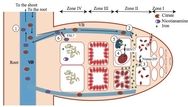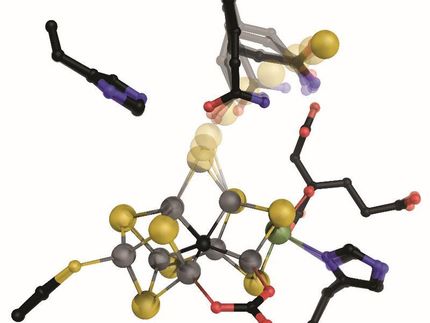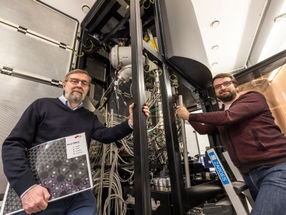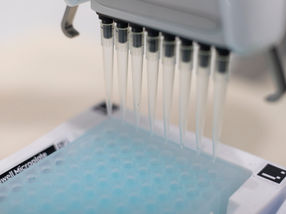X-ray analysis could boost legumes, thus reducing fertilizer pollution
The overuse of nitrogen fertilizers in agriculture can wreak havoc on waterways, health and the environment.

Proposed model for iron transport in the nodule. Iron is transported associated to organic molecules through the vasculature (VB, 1) and released into the apoplast of zone II (2). This process might be mediated by intracellular trafficking. Epidermal iron transporters of the infected cell introduce iron into the cytosol (3). Likely candidates are Nramp and ZIP family members. Once in the cytosol, iron can be transported into the symbiosomes, most likely through SEN1 or other VIT homologue (4). In addition, iron is translocated to other organelles for plant ferroprotein synthesis (5). Once the nodule senesces, iron is recycled and transferred back to the vasculature, probably through YSL transporters (6)
Argonne National Laboratory
An international team of scientists aims to lessen the reliance on these fertilizers by helping beans and similar plants boost their nitrogen production, even in areas with traditionally poor soil quality.
Researchers from the Center of Plant Genomics and Biotechnology at the Technical University of Madrid (UPM) and the Advanced Photon Source (APS) at the U.S. Department of Energy’s Argonne National Laboratory report as an article for the journal of The Royal Society of Chemistry on how to use X-ray analysis to map a path to increasing the amount of nitrogen that legumes deposit into the soil.
Cultivation of legumes, the plant family that includes peas, beans, alfalfa, soybeans, and peanuts, is one of the main ways farmers add natural nitrogen to agricultural fields. Rotating bean and corn crops to take advantage of the nitrogen beans deposit in the soil has long been a global farming tradition. Legumes use iron in the soil to carry out a complex chemical process called nitrogen fixation, which collects atmospheric nitrogen and converts it into organic forms that help the plant grow. When the plant dies, the excess nitrogen is released back into to the soil to help the next crop.
But often legumes are grown in areas with iron-depleted soil, which limits their nitrogen fixation. That’s where research can lend a hand. The Argonne-UPM team has created the world’s first model for how iron is transported in the plant’s root nodule to trigger nitrogen fixation. This is the first step in modifying the plants to maximize iron use.
“The long-term goal is to help sustainable agriculture practices and further diminish the environmental damage from overuse of nitrogen fertilizers,” said Manuel Gonzalez-Guerrero, lead author of the paper from UPM. “This can be done by maximizing the delivery of essential metal oligonutrients to nitrogen-fixing rhizobia.”
The research team, which included Lydia Finney and Stefan Vogt from the APS, used high-energy X-rays from the 8-BM and 2-ID-E beamlines of the APS to track the distribution of minute iron amounts in the different developmental regions of rhizobia-containing roots. This is the first high-energy X-ray analysis of plant-microbe interactions.
X-rays, such as those from the APS, provided a high sensitivity to elements and a high spatial resolution not attainable by other means. Full details can be found in the paper Iron distribution through the developmental stages of Medicago truncatula nodules.
In future studies at the APS, Gonzalez-Guerrero hopes to identify and characterize the key biological proteins responsible for iron transportation. That would give researchers targets to manipulate and screen for new legume varieties with increased nitrogen-fixation capabilities and higher nutritional value.
Organizations
Other news from the department science

Get the analytics and lab tech industry in your inbox
From now on, don't miss a thing: Our newsletter for analytics and lab technology brings you up to date every Tuesday. The latest industry news, product highlights and innovations - compact and easy to understand in your inbox. Researched by us so you don't have to.

























































